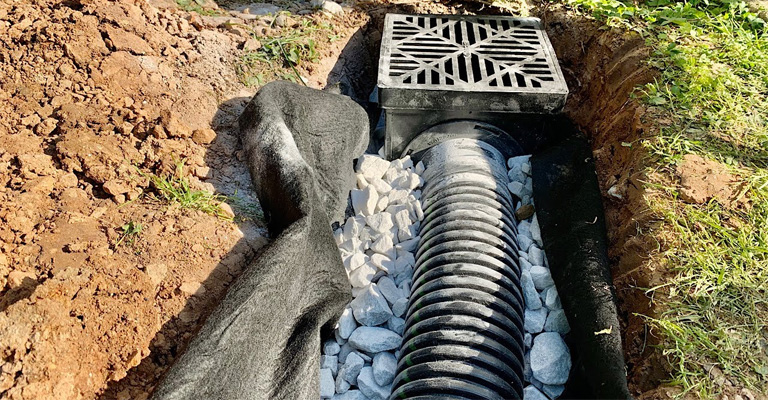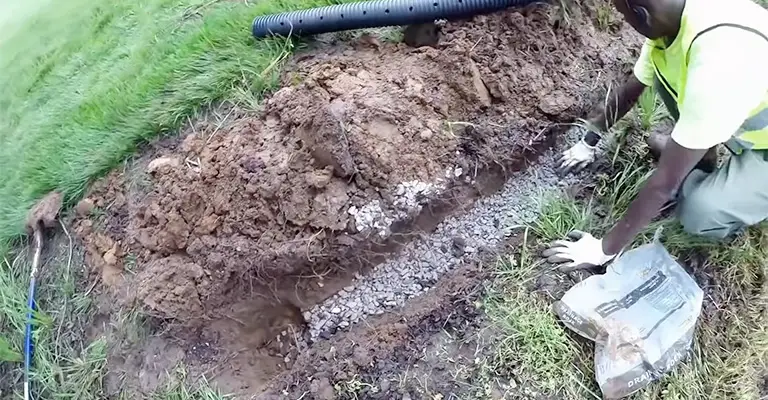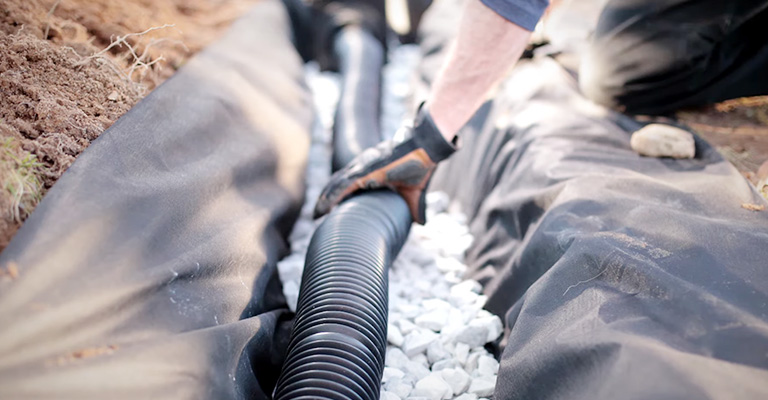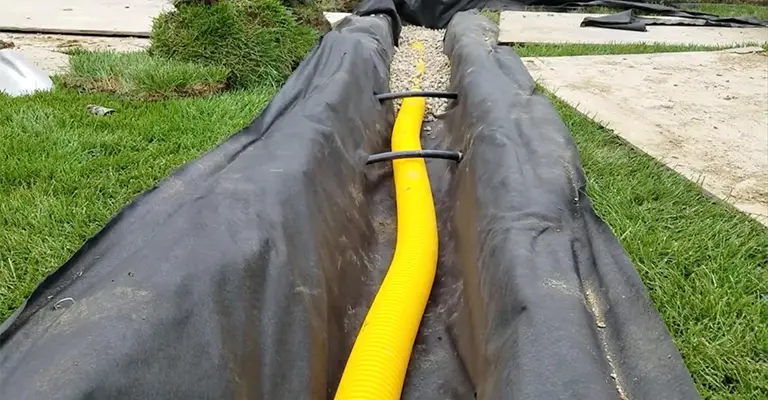A strong foundation is essential when it comes to the longevity and stability of your home. Installing a French drain around its perimeter is one of the most effective ways to protect your foundation from water damage.
French drains are designed to divert water from the foundation, preventing moisture buildup that can lead to structural issues and costly repairs.
Still, related systems, such as those around foundations, underground living spaces, and foundations for retaining walls, may need to be more profound.
The trench for the French drain should be 2-3 feet deep and 2 feet wide if you are installing it around the foundation’s perimeter. should be sufficient for many water-diverting projects.
Determining the optimal depth of the drain is a critical aspect of the installation process, as it directly impacts its ability to effectively manage water and safeguard your home.
How Deep Should You Install French Drain Pipes?

Have you noticed your landscape getting a little wet?
French drains keep stormwater away from your basement, patio, or just a soggy area where water pools. It is crucial to get the depth right so that your French drain can move water efficiently.
Depth Recommendations
It is often the water issue you’re trying to solve that dictates the depth of the hole. A shallow trench is the best solution for pooling water on your property.
You need a deeper French drain if you want to prevent water from seeping into your basement. The water usually takes 18-24 inches to reach the bottom.
In addition to capturing most of the water, this depth is important for preventing flooding.
To prevent water from entering your basement or protect your foundation, you must install your pipe deep enough to accomplish that goal.
If you are using a slab foundation, you want to place the pipe 2 feet below the slab. A French drain can be installed 6 feet or deeper if your basement is deep.
French Drain Trench Width

When it comes to trench size, depth is just one factor. In addition, you need to ensure the correct width for your pipe. It is typical to make your trench 12 to 24 inches wide.
Digging a vast trench for French drains is unnecessary because the pipes are usually 4 or 5 inches in diameter.
If you intend to install a pipe at a site with a lot of water, you may have to widen the trench to accommodate the larger pipe.
How Far Should A French Drain Be From Foundation?
French drain placement is an important consideration when installing one. To protect a home from water damage, an appropriate location of the French drain system is essential for its effective operation.
French drains should be installed around three feet away from a home’s foundation, but this can vary depending on factors at play in the landscaping, such as where water pools and where gutter lines are already in place.
Keeping the French drain far away from the foundation of the home is essential to avoid any structural issues in the future and ensure that the drain performs as intended.
The Slope Of French Drains

It is also important to consider the slope when determining the depth for your French drain installation. Water must drain correctly depending on where you want it to go by lying in the correct direction on the pipe.
The general rule of thumb is to slope French drain pipes by 1 inch for every 8 feet of length. Don’t forget to keep this slope in mind when digging your trench.
Understanding French Drain Applications
French drains are common among residential, commercial, and municipal property owners across all sectors of society who have drainage problems that may damage their homes, buildings and properties and limit the use of their lawns and landscaping.
The natural flow of water along paths of least resistance can result in sunken walls and barriers, where moisture can accumulate over time and degrade the material.
Even a hairline crack can allow water to enter where it shouldn’t, causing destruction, creating health hazards, and more.
There are a variety of reasons why seepage could occur in a basement or crawlspace, which can range from a minor issue to a very significant one.
Drainage problems can be solved using a French drain in the following situations:
- Building basements, foundations, and crawlspaces
- Areas with lawns and landscaping
- The following sports fields, playing fields, and playgrounds are available
- Driveways and patios created from hardscape
- Wall retaining
- An area whose surface or subsurface is saturated
It is easy to locate a French drain by observing where water pools after rain, especially if it stays there for days or hours. The fact that clay soil holds water well can contribute to this problem.
It can also clog French drain systems by filtering fine particles into the aggregate, where they fill in gaps and prevent water from flowing.
As a result, considering the French drain as another of its nicknames-the “burrito drain”-can be helpful.
The quality burrito, of course, consists of many ingredients wrapped tightly together. There is nothing in there that does not come from you.
Burrito drains consist of the necessary components (perforated pipe and aggregate) surrounding a filter fabric to prevent even fine particles from accumulating and blocking water flow.
Final Words
Depending on your reason for installing a French drain, you may have to dig a trench both deeper and in different locations.
These are often designed to prevent water from leaking into your basement or pressing against your slab foundation.
The French drain can help move water away from the foundation, thus helping dry up basement water problems. Additionally, you can use a French drain to keep water from pooling in low areas.
Water can run directly toward a patio or other outdoor structure if your property naturally slopes. Likewise, French drains can be used on steep slopes when building a retaining wall.








